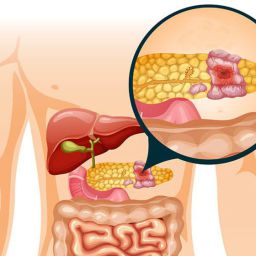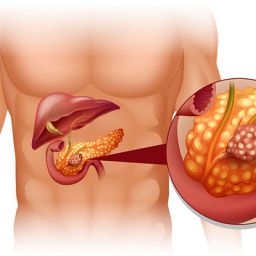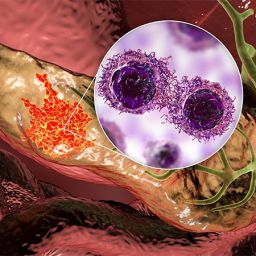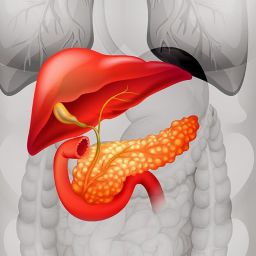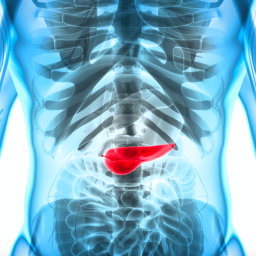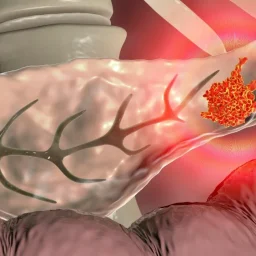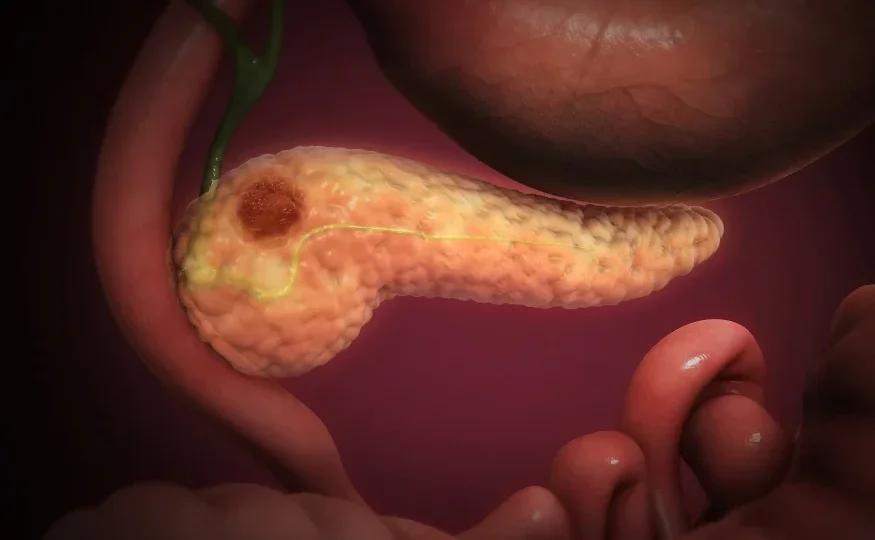
1. What is Pancreatic Cancer Metastasis?
Metastasis occurs when cancer cells spread from the primary site (the pancreas in this case) to other parts of the body. Pancreatic cancer typically spreads through the bloodstream or lymphatic system, invading distant organs such as the liver, lungs, peritoneum, and lymph nodes.
Unlike localized pancreatic cancer, where the tumor is confined to the pancreas, metastatic pancreatic cancer is more challenging to treat because the cancer cells have spread to other organs, making surgical removal less feasible.
1.1 Stages of Metastasis
When pancreatic cancer metastasizes, it usually follows a specific pathway:

- Local Invasion: Cancer cells may first invade nearby tissues, such as the stomach, small intestine, or bile ducts.
- Regional Spread: The cancer may then spread to nearby lymph nodes and blood vessels.
- Distant Metastasis: Eventually, the cancer cells may travel through the bloodstream or lymphatic system to more distant organs like the liver, lungs, or bones.
At the point of distant metastasis, pancreatic cancer is classified as stage IV, which is the most advanced stage of the disease.
2. Common Organs Affected by Pancreatic Cancer Metastasis
Metastatic pancreatic cancer commonly spreads to specific organs. Each of these organ systems plays a vital role in the body’s functions, and the spread of cancer to these organs can significantly impair their ability to function normally.
2.1 Liver Metastasis
The liver is one of the most common sites of metastasis for pancreatic cancer. Because the liver filters blood from the pancreas, cancer cells can easily enter the liver through the bloodstream. When pancreatic cancer spreads to the liver, it can cause:
- Jaundice: A yellowing of the skin and eyes due to the liver’s inability to process bilirubin.
- Abdominal Pain: The liver may become enlarged, leading to pain and discomfort in the upper right side of the abdomen.
- Ascites: The buildup of fluid in the abdomen, causing bloating and swelling.
Liver metastasis in pancreatic cancer often leads to a decline in liver function and can make treatment more challenging.
2.2 Lung Metastasis
The lungs are another common site for the spread of pancreatic cancer. Cancer cells can travel through the bloodstream and reach the lungs, where they may form secondary tumors. Lung metastasis can lead to:
- Shortness of Breath: Difficulty breathing or a sensation of tightness in the chest.
- Persistent Cough: A cough that does not resolve, often accompanied by blood-tinged sputum.
- Chest Pain: Pain or discomfort in the chest due to tumor growth.
Lung metastasis may also increase the risk of developing pneumonia or other respiratory complications.
2.3 Peritoneal Metastasis
The peritoneum is a membrane that lines the abdominal cavity and covers many of the abdominal organs. When pancreatic cancer spreads to the peritoneum, it is called peritoneal carcinomatosis. This type of metastasis can cause:
- Abdominal Pain and Swelling: The accumulation of cancer cells in the peritoneum leads to fluid buildup (ascites) and abdominal distension.
- Bowel Obstruction: As the cancer grows, it can block the intestines, leading to nausea, vomiting, and difficulty eating.
Peritoneal metastasis is often associated with a poor prognosis due to its impact on the functioning of vital organs.
3. Symptoms of Metastatic Pancreatic Cancer
As pancreatic cancer spreads to other organs, new symptoms can emerge. These symptoms vary depending on the organs affected and the extent of metastasis. However, common symptoms of metastatic pancreatic cancer include:

- Severe Abdominal Pain: Due to the spread of cancer to the peritoneum, liver, or other organs in the abdomen.
- Jaundice: Yellowing of the skin and eyes, often seen with liver involvement.
- Unexplained Weight Loss: A significant and unexplained drop in body weight is common in advanced pancreatic cancer.
- Fatigue: Patients often experience overwhelming fatigue due to cancer-related inflammation, anemia, and the body’s energy demands.
- Loss of Appetite: Decreased appetite and early satiety can occur as the cancer spreads, particularly when it affects the digestive organs.
In advanced stages, patients may also experience nausea, vomiting, and digestive problems, especially if the cancer causes obstructions in the gastrointestinal tract.
4. Prognosis and Life Expectancy with Metastatic Pancreatic Cancer
The prognosis for patients with metastatic pancreatic cancer is generally poor. Pancreatic cancer is often diagnosed at an advanced stage, and by the time it metastasizes, it has spread beyond the point where curative treatment is possible. The life expectancy of a patient with metastatic pancreatic cancer depends on several factors, including:
- The Extent of Metastasis: Patients with cancer confined to one or two organs may have a slightly better prognosis than those with widespread metastasis.
- Overall Health: Younger, healthier patients may tolerate aggressive treatments better and experience longer survival times.
- Response to Treatment: The success of chemotherapy, targeted therapies, and palliative care can significantly impact the prognosis.
For most patients with metastatic pancreatic cancer, the goal of treatment is to relieve symptoms, improve quality of life, and extend survival, rather than to cure the disease. On average, the survival rate for metastatic pancreatic cancer is low, with many patients living only months after diagnosis. However, advances in treatment options, including clinical trials of new therapies, offer hope for better outcomes.
5. Treatment Options for Metastatic Pancreatic Cancer
While metastatic pancreatic cancer is difficult to treat, several options are available to manage the disease and improve quality of life.
5.1 Chemotherapy
Chemotherapy is the most common treatment for metastatic pancreatic cancer. It is used to shrink tumors, slow cancer growth, and manage symptoms. Common chemotherapy drugs used include Gemcitabine, FOLFIRINOX, and nab-paclitaxel. Chemotherapy can help extend life and reduce the symptoms of metastasis, but it is not curative.
5.2 Targeted Therapy
Targeted therapies, such as PARP inhibitors (for patients with BRCA mutations), may offer more personalized treatment for certain patients. These therapies target specific molecules that promote cancer cell growth and survival, offering hope for better outcomes.
5.3 Immunotherapy
Immunotherapy is an emerging treatment for pancreatic cancer, particularly in cases where the cancer has specific genetic mutations. Immune checkpoint inhibitors may help the body’s immune system recognize and attack cancer cells. While immunotherapy is still being studied in clinical trials, it has shown promise in some patients.
Metastatic pancreatic cancer presents significant challenges due to its aggressive nature and its ability to spread to vital organs. The effects of metastasis can severely impact a patient’s health, quality of life, and overall prognosis. However, advancements in treatment options, including chemotherapy, targeted therapies, and palliative care, are helping to manage symptoms and extend survival in some patients.
While metastatic pancreatic cancer remains difficult to treat, ongoing research into new therapies and clinical trials offers hope for future improvements in outcomes. Patients with metastatic pancreatic cancer should work closely with their healthcare team to explore treatment options, manage symptoms, and maintain the best possible quality of life.



